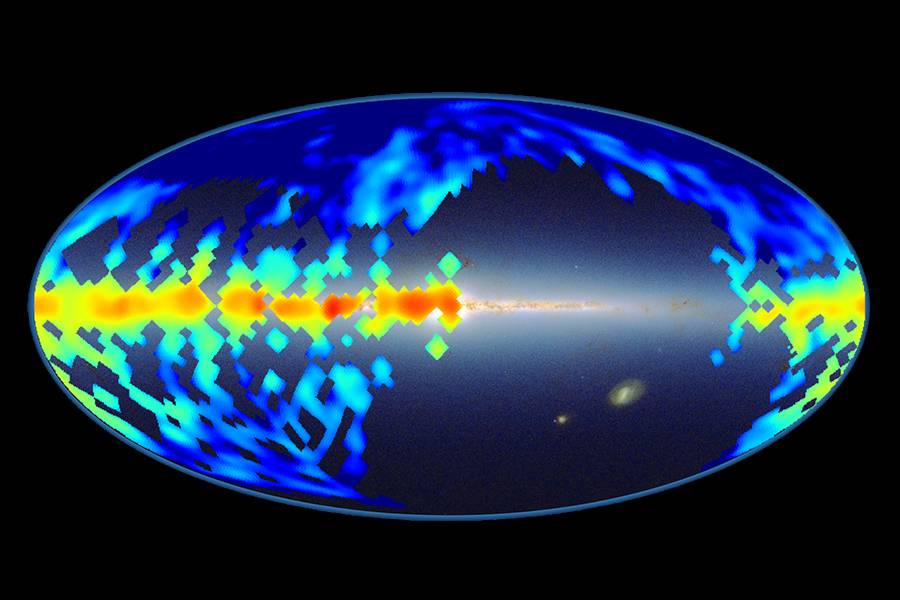The MWM dust program will obtain a sample of bright, nearby, midplane (|z| < 200 pc) giants that, when combined with other cartons (primarily Galactic Genesis), produces at least 10 stars per (100 pc)3 volume in the local Milky Way (d < 5 kpc). The combination of the two cartons will enable near complete, high-stellar-density coverage of the disk in giant stars out to d = 5 kpc at circa 100 pc resolution.

Credit: T.W. Lan, G. Zasowksi, B. Ménard, SDSS AND 2MASS/UMASS/IPAC-CALTECH/NASA/NSF
Achieving this uniform sampling of stars per 3D volume element will enable two of the main science goals of the dust program: characterizing the variation in the extinction curve in 3D and characterizing the properties of diffuse interstellar bands (DIBs) to better understand gas flows and dust chemistry. To achieve the first goal, MWM will deliver precision stellar temperatures and metallicities that, when combined with Gaia parallaxes and wide-field photometry, will measure the shape of the extinction curve across the Galactic disk. The second goal will be achieved by measuring the wavelength and equivalent width of the 15273 Å DIB, which traces dust motion and DIB carrier column density, respectively. The ensemble of DIB measurements can be used to map dust kinematics on both galactic and cloud scales, which will in turn provide quantitative constraints on both the molecular cloud lifecycle and the nature of spiral structure in the Milky Way.
Cartons
mwm_dust_core
The dust program contains a single carton, mwm_dust_core, that maintained the same name and selection function for both the 0.1.0 targeting plan for plate observations and the 0.5.0 targeting plan for FPS observations. Nearby giants are identified using the following criteria. The astrometry is from Gaia DR2 . The J, H, and K photometry are from 2MASS. The 4.5 micron magnitudes are taken from, in order of preference, GLIMPSE or AllWISE.
- Parallax error/error < 0.2
- distance < 5 kpc where distance=1/parallax
- |z| < 0.2 kpc
- MK < 2.6 where AK=0.918 (H-4.5)
- (J-K)0 > 0.5 where E(J-K)=1.5 AK
- H < 11.2
- Galactic Genesis quality flags on the 2MASS photometry:
- 2MASS gal_contam == 0
- 2MASS cc_flg == 0
- 0 < 2MASS rd_flag <= 3
- 2MASS ph_qual flag is A or B
The targets are further downsampled depending on the spatial coverage of the Galactic Genesis targets. The Galaxy within 5 kpc and with |z| < 0.2 kpc is divided into regions of 100 pc3 and the number of Galactic Genesis targets in the database that fall into each region are counted. If there are fewer than 10 stars in a given region, then additional stars (up to a total of 10) from the nearby giant selection above are included. It is these additional stars that comprise the final mwm_dust_core carton.
Cadences
During the plate era, targets could be observed with APOGEE on plates with any cadence other than the RM cadence.
During FPS operations, targets are observed with the bright_1x1 cadence.
